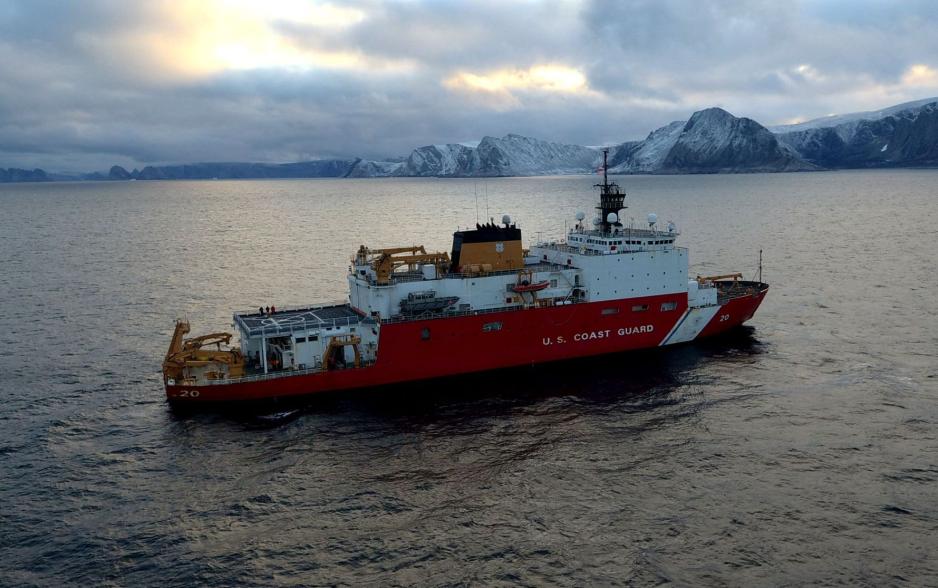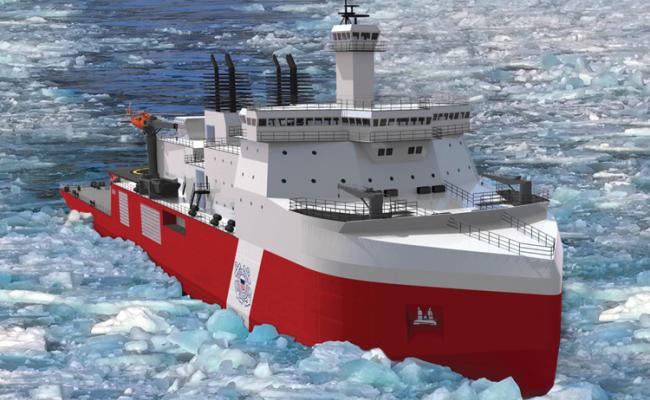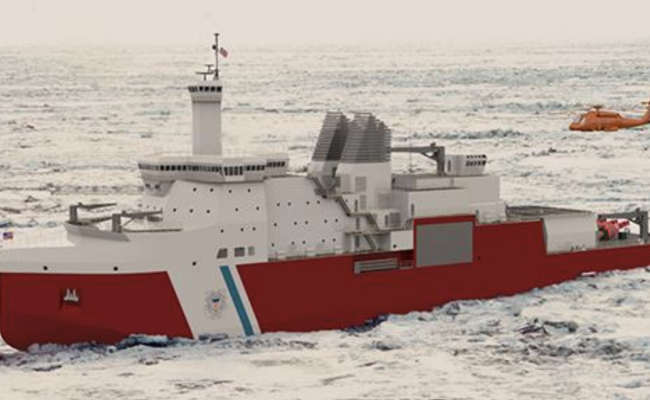“Icebreaking Gap” Will Require Coast Guard to Acquire Commercial Icebreaker Says New US Arctic Plan

US Coast Guard Cutter Healy in Baffin Bay in 2021. (Source: US Coast Guard/Petty Officer 2nd Class Meredith Manning)
A new implementation plan for the US Coast Guard’s Arctic strategy clears a path for acquisition of a commercial icebreaker to overcome the “icebreaking capacity gap.” The report also calls for expanded exercises and operations in the Arctic, which in conjunction with a new White House Arctic plan may indicate plans for a future Freedom of Navigation Operation in the region.
For months US Coast Guard officials have floated the idea the agency could acquire a commercially available icebreaker to narrow the “icebreaker gap,” while it awaits the construction and delivery – not expected before 2028 – of the first new Polar Security Cutter.
The newly released implementation plan for the US Coast Guard Strategic Outlook now formalizes this approach.
The document calls for the development of a strategy “to acquire a commercially-available icebreaker to complement existing polar icebreaking cutter capabilities and increase near-term Arctic presence prior to Polar Security Cutter delivery.”
Aging icebreakers
The decision to include the need for a commercial icebreaker in the Coast Guard’s implementation plan highlights how limited the agency’s current icebreaking capabilities are.
Its two aging icebreakers have repeatedly suffered mechanical failures, including onboard fires, leaving them unavailable for extended periods of time.
The report states how “sufficient polar icebreaking capability is critical to enabling assured access to the Arctic Ocean [...] and to execute the U.S. Coast Guard’s statutory responsibilities throughout the Arctic year-round,” and then affirms that despite the agency’s efforts to procure new icebreakers, the capability gap will remain until “a sufficient number of new icebreakers are delivered.”
It is noteworthy that the report uses icebreakers in the plural, indicating that even with the anticipated delivery of the first Polar Security Cutter in 2028 the capability gap will continue.
The second Polar Security Cutter will likely not enter into service before the next decade, according to recent reports, extending the US’ icebreaker problem into the 2030s.
Arctic Freedom of Navigation Operation
In total the implementation plan outlines fourteen initiatives to improve and expand the Coast Guard’s capabilities in the region.
Key recommendations are expanding surface and aviation capabilities, improving area communications and maritime domain awareness, and working through and maintaining US leadership in international bodies like the Arctic Council, the IMO, and the Coast Guard Forum.
The report also calls for an increase in exercises in the region in alignment with the agency’s “force posture” and states that the Coast Guard will “continue to prioritize regional operations and exercises in support of national objectives, maximizing integration with multinational allies.”
One such operation was the icebreaker Healy’s recent mission in proximity to Russia’s Northern Sea Route, which concluded with a joint exercise with Norway’s Coast Guard vessel KV Svalbard in Tromsø in October.
The implementation plan does not make direct mention of Freedom of Navigation Operations as part of the Coast Guard mission in the Arctic.
The White House’s implementation plan for the National Arctic Strategy, released just days prior to the Coast Guard’s document, on the other hand explicitly lists “protection of the freedom of navigation in the Arctic” as a strategic objective.
The document states that “next steps” include the “conducting [of] Arctic maritime exercises, operations, and transits consistent with international law and in coordination with stakeholders, as appropriate.” The White House plan assigns the Coast Guard as a supporting agency for this strategic objective.



